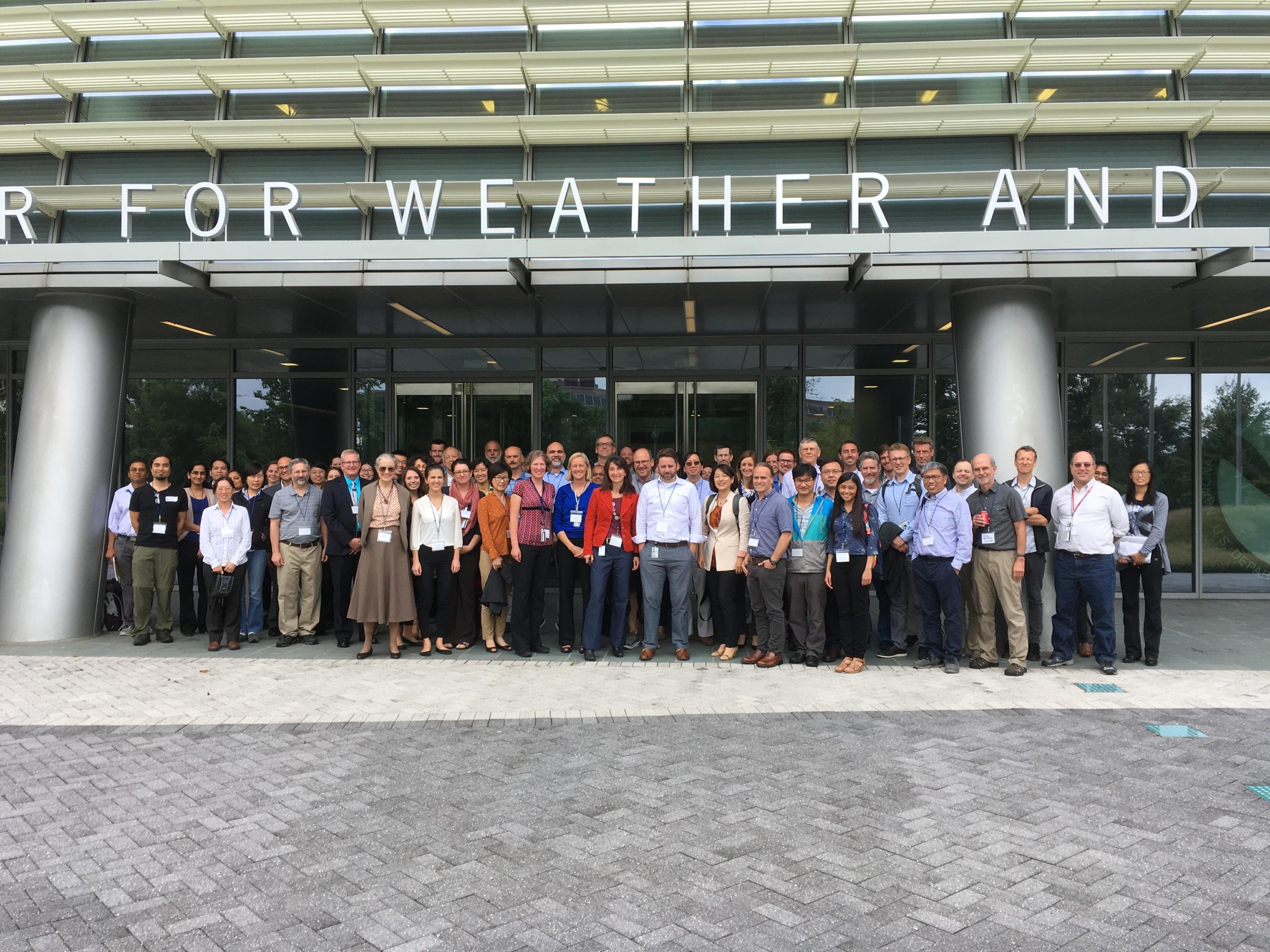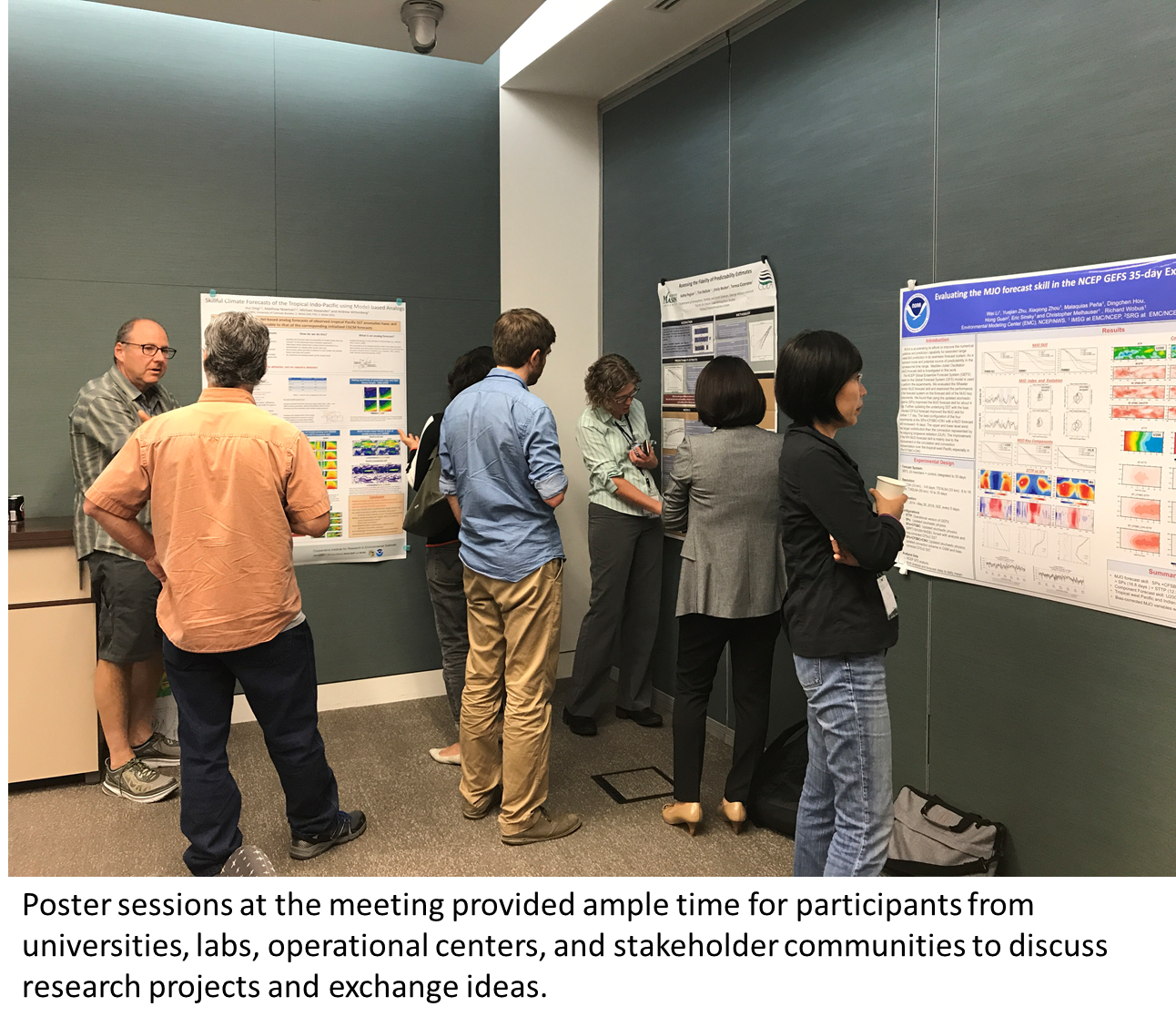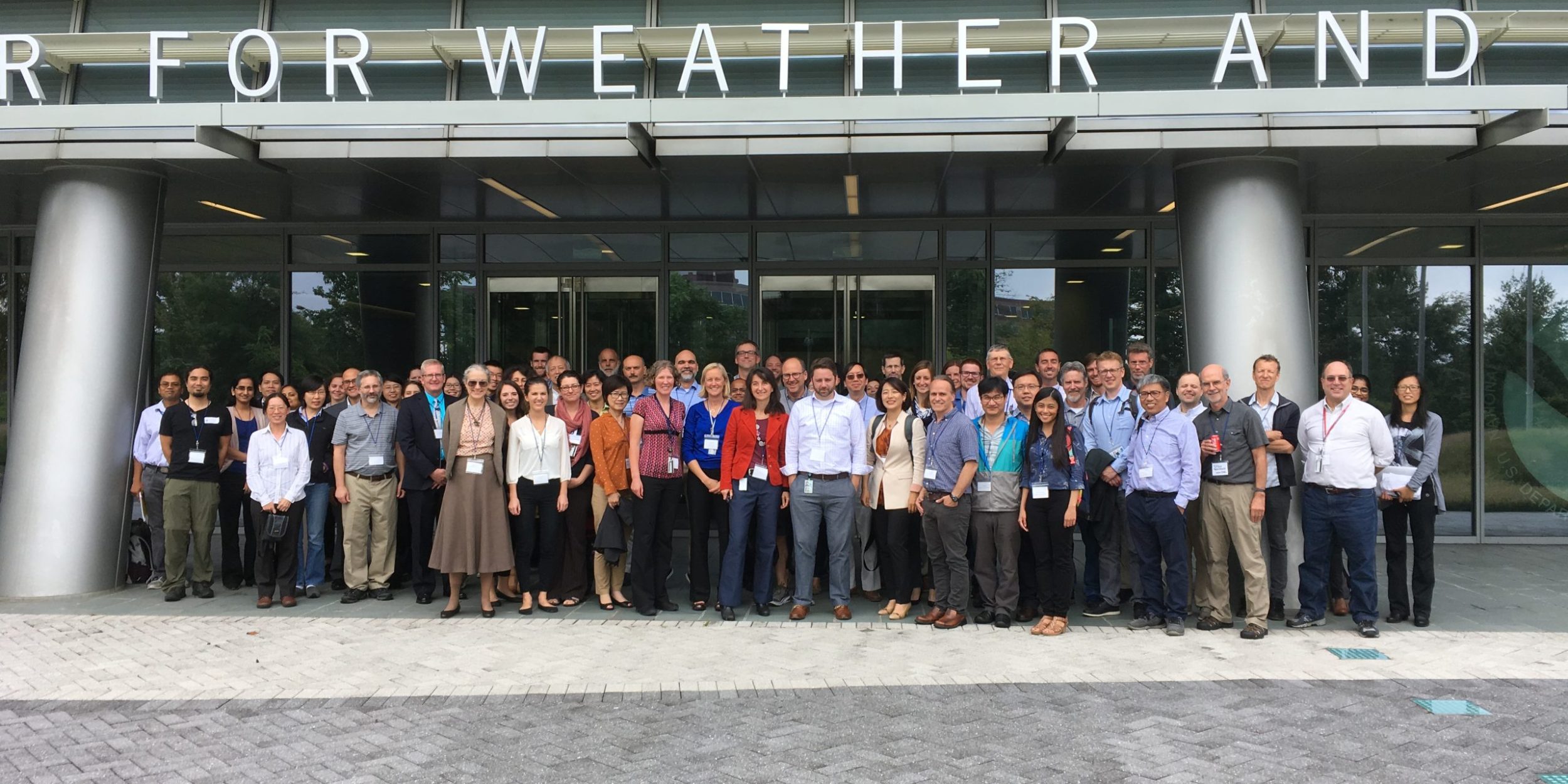

Participants at the NMME/SubX Science Meeting held September 13-15 at the National Center for Weather and Climate Prediction.
Typically, the weather and climate have been known as separate communities — weather being the short-term state of the atmosphere (from minutes out to two weeks) and climate being the long-term pattern of atmospheric conditions (from a season and beyond). This leaves a weather-climate prediction gap (from two weeks to a season) that scientists call the subseasonal to seasonal (S2S) timescale.
Bridging this gap has remained challenging for scientists, but public demand and promising research has focused NOAA’s attention on this prediction problem. As an important milestone for NOAA’s ongoing efforts, researchers from universities, NOAA OAR research laboratories and the National Weather Service (NWS) recently met to discuss efforts to improve S2S predictions.
The meeting focused on the use of real-time forecasts and forecasts of past dates (called hindcasts) from two robust databases: the North American Multi-Model Ensemble (NMME), a state-of-the-art seasonal prediction system combining forecasts from leading climate models; and the Subseasonal Experiment (SubX), an ongoing two-year project testing predictions 3-4 weeks in advance from individual and combinations of multiple global models.
“The SubX project bridges the gap between the NMME forecast and day-to-day weather forecasts,” said Ben Kirtman, lead of the SubX project team and University of Miami Rosenstiel School atmospheric scientist. “This is particularly important for hurricanes – we can use the NMME forecast to make seasonal hurricane outlooks and then update these outlooks within the season using the SubX data. Essentially we intend to predict the chances of enhanced (or reduced) hurricane potential 3-4 weeks in advance.”
More skillful on average than other seasonal forecast systems, the NMME system transitioned to operations last year and provides a 30-year set of hindcasts that have been used extensively for ongoing research. The SubX project’s data was publicly released this August and the system will be rigorously evaluated over the next year to determine whether the ensemble or any individual models should become operational. Both systems have been developed through OAR research projects as part of the Climate Program Office, Modeling, Analysis, Predictions and Projections Program and the NOAA Climate Test Bed in partnership with the NWS and U.S. other agencies.
Emily Becker, one of the meeting organizers and a research scientist at NOAA’s NWS Climate Prediction Center, saw this meeting as an opportunity to 

Investigators included Paul Dirmeyer, who is studying interactions between soil moisture and the atmosphere at George Mason University and co-leads the NOAA S2S Prediction Task Force, which addressing understanding and modeling of S2S predictability sources. He recognized the value of bringing the research teams together.
“There are a lot of different aspects of the Earth system that are addressable on these subseasonal timescales, and different people are working on different parts,” said Dirmeyer. “We all want to improve the skill of the forecasts.”
The meeting also importantly brought together operational forecasters and representatives from the public who regularly use these forecasts to make decisions, such as private companies like The Weather Company and Accuweather. This fostered a direct trade of information, bringing new research findings to the forecasters and decision-maker/private sector needs to the scientists who can address them.
“It’s feeding back. What they see and what we see from the inside are often very different,” said Becker regarding the collaboration between the users and scientists. “Knowing that they are using [the forecasts] and hearing how they are and what is useful is helpful to continue developing from the inside.”
Improving subseasonal to seasonal predictions could substantially help NOAA better prepare decision makers for hazards like heat waves, cold spells, and heavy rain. This meeting represents a milestone towards that mission.
“If the research we are doing leads to changes in operational forecasting that improve the skill of the forecasts, then we’ve done our job,” said Dermeyer.
The NMME/SubX Science Meeting was supported by the OAR CPO’s Modeling, Analysis, Predictions, and Projections Program and was held September 13-15 at the National Center for Weather and Climate Prediction in College Park, Maryland.
For more information, go to: http://cola.gmu.edu/kpegion/nmmeworkshop2017/



